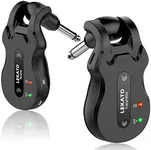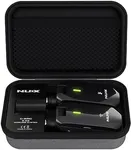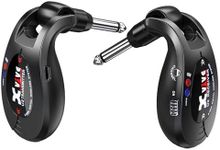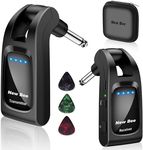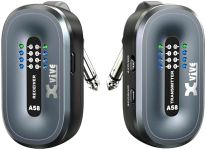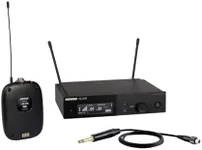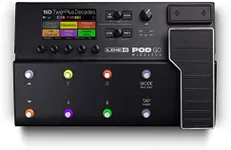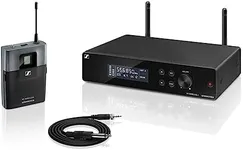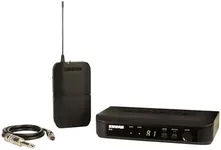Buying Guide for the Best Wireless Guitar Systems
Choosing the right wireless guitar system can greatly enhance your performance by providing freedom of movement and eliminating the hassle of cables. When selecting a wireless guitar system, it's important to consider several key specifications to ensure you get the best fit for your needs. Understanding these specs will help you make an informed decision and find a system that matches your playing style and performance requirements.Frequency RangeThe frequency range of a wireless guitar system refers to the range of radio frequencies it uses to transmit the signal from your guitar to the receiver. This spec is important because it affects the system's ability to avoid interference from other wireless devices. Systems typically operate in UHF (Ultra High Frequency) or VHF (Very High Frequency) bands. UHF systems are generally preferred for their better range and less susceptibility to interference. If you play in environments with many wireless devices, a UHF system might be the best choice.
RangeThe range of a wireless guitar system indicates the maximum distance between the transmitter and receiver while maintaining a clear signal. This is crucial for performers who move around a lot on stage or play in large venues. Ranges can vary from around 50 feet to over 300 feet. For small venues or home use, a shorter range may suffice, but for larger stages or outdoor performances, a longer range is essential to ensure uninterrupted signal transmission.
Battery LifeBattery life refers to how long the transmitter and receiver can operate on a single charge or set of batteries. This is important for ensuring that your system doesn't die in the middle of a performance. Battery life can range from a few hours to over 10 hours. If you play long gigs or don't want to worry about frequent recharging, look for systems with longer battery life. Rechargeable systems can be convenient, but make sure they offer enough playtime for your needs.
LatencyLatency is the delay between when you play a note on your guitar and when the sound is heard through the amplifier. Low latency is crucial for maintaining the timing and feel of your performance. Most modern wireless systems have very low latency, often under 5 milliseconds, which is generally imperceptible. If you are highly sensitive to timing or play fast, intricate music, ensure the system you choose has minimal latency.
Audio QualityAudio quality refers to the clarity and fidelity of the sound transmitted by the wireless system. This is important for ensuring that your guitar's tone is accurately reproduced without distortion or loss of detail. Look for systems that offer a wide frequency response and high signal-to-noise ratio. If you play genres that rely heavily on tone quality, such as jazz or classical, prioritize systems known for their superior audio quality.
ChannelsChannels refer to the number of different frequency options available on the wireless system. This is important for avoiding interference from other wireless devices operating on the same frequency. Systems with multiple channels allow you to switch frequencies if you encounter interference. If you play in environments with many wireless devices, such as festivals or busy venues, a system with more channels will provide greater flexibility and reliability.
Build QualityBuild quality refers to the durability and robustness of the wireless system's components. This is important for ensuring that the system can withstand the rigors of live performance and frequent use. Look for systems with sturdy construction, such as metal housings for the transmitter and receiver. If you frequently gig or travel, prioritize systems known for their reliability and durability to avoid issues on the road.
